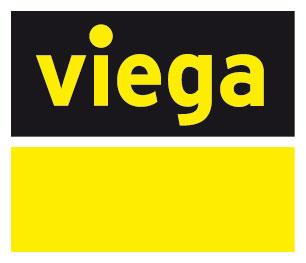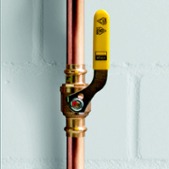Those dots on our ProPress and MegaPress fittings aren’t for decoration.
They indicate that the fitting has Smart Connect technology, and in metal fittings, the color of the dot designates which of three different sealing elements is in the fitting. Each has its own applications and specifications:
Green dot – This specifies a fitting with an EPDM sealing element. EPDM (or ethylene-propylene-diene monomer rubber) is a synthetic, cured, all-purpose elastomer with excellent resistance to chemicals and other harsh environmental conditions. With operating temperatures from 0℉ to 250℉, it is suitable for any type of water application (hot water included), as well as compressed air. On a PureFlow fitting (which doesn’t have a sealing element), a green dot simply indicates the presence of Smart Connect technology.
White dot – This specifies a fitting with an FKM sealing element. FKM is a specialty-purpose fluoroelastomer. In combination with excellent resistance to chemicals and environmental influences, it is resistant to extreme spikes in temperatures (up to 356℉) for 24 hours or less. These qualities make it suitable for industrial environments with harsh, corrosive conditions.
Yellow dot – This specifies a fitting with an HNBR sealing element. HNBR (or hydrogenated nitrile butadiene rubber) is a specialty-purpose elastomer with a great deal of strength and retention in the face of heat, oil and chemical exposure. HNBR sealing elements are primarily geared toward fuel gas applications, from natural and propane to mixed and manufactured gases, along with oils and lubricants.
In addition to the fittings, the dots can be found on the bags for easy identification at a distributorship, along with colored bags (clear for EPDM, yellow for HNBR and orange for FKM). Installing a fitting with the incorrect sealing element for the application can shorten the life of the sealing element.
Difference between sealing elements and O-rings
Don’t confuse sealing elements with O-rings, which look similar and perform similar functions.
The primary difference between the two is in their longevity and how they’re used. O-rings are installed as a dynamic seal; so that the O-ring can move with the assembly it is installed in, like a washer-less faucet.
Sealing elements are installed as a static seal, so that the element never moves once pressed.
Because O-rings move, they are subject to friction. As a result, they wear out and must be replaced. Assemblies with O-rings are specifically designed to be taken apart so that the O-rings can be replaced. The frequency of replacement depends on the application, material, degree of movement and use.
By contrast, sealing elements in press fittings do not suffer the same wear and tear and do not have to be replaced. They are permanent once pressed and designed to outlast the fitting they are installed in.
At Viega, we are equally confident in the quality of our sealing elements and our fittings. Operating within our approved conditions, our sealing elements have an expected life span beyond that of the warranty period for each product line. For example, our standard ProPress fittings are backed by a 50-year warranty. We stand behind the ability of our sealing elements to meet these same demands.








